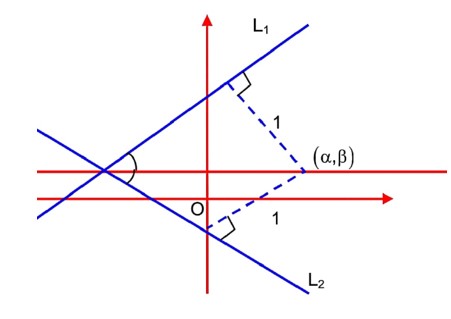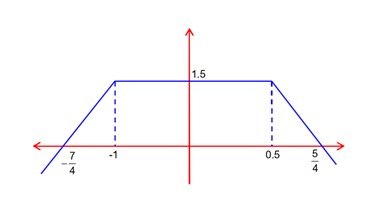Straight Lines
Get insights from 177 questions on Straight Lines, answered by students, alumni, and experts. You may also ask and answer any question you like about Straight Lines
Follow Ask QuestionQuestions
Discussions
Active Users
Followers
New answer posted
3 months agoContributor-Level 10
Circumcentre (D)
(i) ->
(ii) -> 9 + 16 = 9 + 16
ar
2S = 24
R = 5, r =
New answer posted
3 months agoContributor-Level 10
for square a,b,c,d let
Diagonal : (cos a - sina)x + (sina + cosa)y = 10
BD (diagonal)
Dist. Of BD from A is
Also, a2 + 11a + 3
-> 210 + 3
Also, m1 m2 = -1
->m2 +
or
m =
m =
Diagonal AC:
=10 cos2a - 10cos2a = 0
Slope of AC =
New answer posted
3 months agoContributor-Level 10
S
Let orthocenter be (h, k)
Since it if an equilateral triangle hence orthocenter coincides with centroid.
New answer posted
3 months agoContributor-Level 10
L1 : 3x – 4y + 12 = 0
L2 : 8x + 6y + 11 = 0
lies on that angle which contain origin
Equation of angle bisector of that angle which contain origin is
lies on it
…… (i)
……. (ii)
Solving (i) & (ii)
New answer posted
4 months agoContributor-Level 10
36 = 2 * 2 * 3 * 3
Number should be odd multiple of 2 and does not having factor 3 and 9
Odd multiple of 2 are
102, 106, 110, 114….998 (225 no.)
No. of multiplies of 3 are
102, 114, 126 ….990 (75 no.)
Which are also included multiple of 9
Hence,
Required = 225 – 75 = 150
Taking an Exam? Selecting a College?
Get authentic answers from experts, students and alumni that you won't find anywhere else
Sign Up on ShikshaOn Shiksha, get access to
- 65k Colleges
- 1.2k Exams
- 679k Reviews
- 1800k Answers


